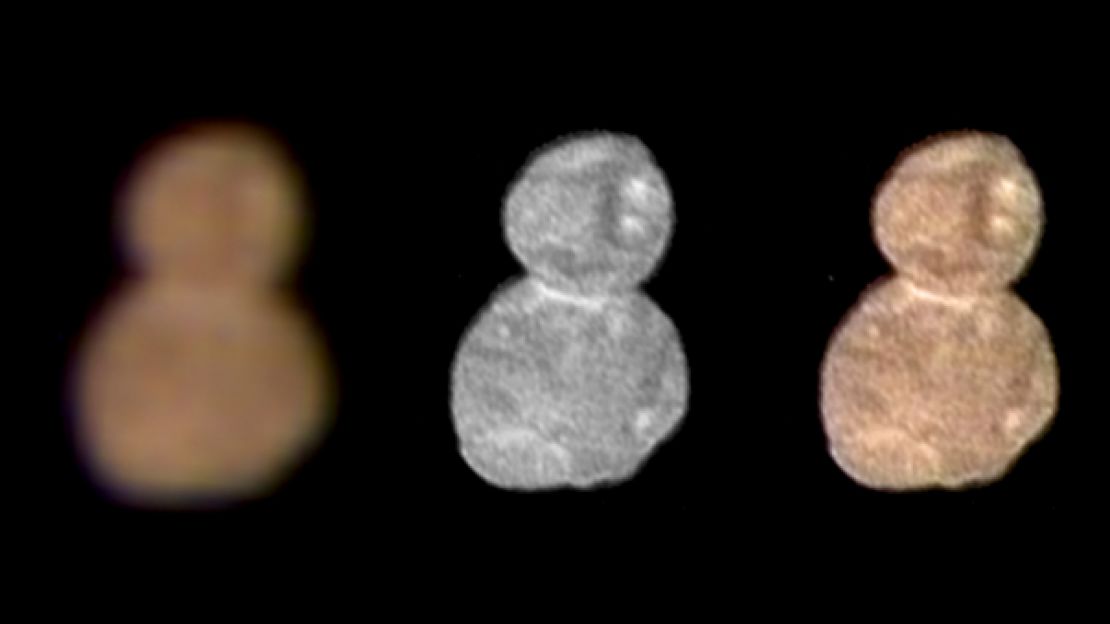Editor’s Note: Don Lincoln is a senior scientist at Fermi National Accelerator Laboratory. He is the author of “The Large Hadron Collider: The Extraordinary Story of the Higgs Boson and Other Stuff That Will Blow Your Mind” and produces a series of science education videos. Follow him on Facebook. The opinions expressed in this commentary are his. View more opinion articles on CNN.
It is in humanity’s nature to explore. From the first hesitant steps out of Africa, to the intrepid sailing ships venturing away from Europe in the 1400s, we’ve always looked to the horizon, yearning for land or adventure. That desire to venture into the unknown continues powerfully today, as we can see from China’s announcement that it has landed a rover on the far side of the moon and also from the remarkable news from NASA’s New Horizons probe.

New Horizons is a sophisticated robotic craft sent by NASA scientists and engineers to photograph the most distant astronomical body ever investigated. And on New Year’s Day, it flew past a frigid block of ice, located about 4 billion miles from the sun and provisionally called Ultima Thule.
Until that moment, that block of ice had been nothing but a white dot viewed on a computer screen. But once the data from the New Horizons probe was transmitted to Earth, a different picture was revealed. Ultima Thule isn’t a sphere like the Earth or the moon, nor is it a craggy rock like asteroids are often depicted in science-fiction movies. Instead, the first fuzzy photos looked something like a bowling pin. As more data was received, an even clearer image materialized. Ultima Thule actually looks a bit like a snowman, made of two spheres, touching at a point.

The New Horizons probe wasn’t designed to visit Ultima Thule. Instead, its initial goal was to photograph Pluto, which it did brilliantly in 2015. New Horizons was launched with a very high velocity and was not intended to tarry too long in Pluto’s vicinity. Instead, it flew by and headed off into deep space, into a world of icy objects.
Some of us remember a time when students were taught that there were nine planets, one of which was called Pluto. Pluto was always an oddball, with an orbit that was tilted compared to the other planets. Scientists wondered if there might be similar icy objects orbiting in the far reaches of the solar system. In 1951, astronomer Gerard Kuiper proposed that the solar system was once surrounded by not a few, but rather many bodies like Pluto and countless smaller ones. This conglomeration of snowballs is called the Kuiper belt.
While Kuiper thought that the Kuiper belt had dispersed early in the formation of the solar system, that was because he imagined that Pluto was much more massive than it actually is – perhaps as large as the Earth. Had it been as large as he thought, its gravity would have knocked its companion snowballs out of the solar system.
However, Pluto is actually much smaller than that, with a mass of only about 0.2% that of Earth. Thus, its gravity isn’t enough to affect the vast majority of Kuiper belt objects. Besides Pluto, the first of the Kuiper belt objects was discovered in the early 1990s and we now know of about a thousand of them. Astronomers think that more than 100,000 exist.
The Kuiper belt is thought to contain pristine examples of the original building blocks of the primordial solar system. Objects like Ultima Thule, which is about 10 miles across and 20 miles long, formed very early on in the history of the solar system and should contain ancient ice that has long been unrecognizably altered on planets much closer to the sun. And even many comets, which often originate from the Kuiper belt, have passed near the sun more than once. As comets heat up, their more volatile ice and gases evaporate, meaning that they are different from when they were formed. In contrast, Ultima Thule seems to be truly untouched – a museum piece from the dawn of time.
Already, the scientific information is helping us understand this early period in the history of the solar system. Ultima Thule is slightly red and it is covered by exotic ices discolored by eons of radiation. We also know that it is not very reflective. In fact, the darkest parts of it reflect about as much as potting soil, said scientist Cathy Olkin of the Southwest Research Institute.
It’s perhaps worth noting how humanity achieved this scientific triumph. For all of the excitement surrounding manned spaceflight, that sort of exploration is expensive and risky. We are fragile beings and require tremendous support to survive. In contrast, robots are robust and can survive the harshness of space. We have sent robotic probes to all of the eight planets of the solar system and even landed on a comet. And now we have even slipped the shackles of the inner solar system and, as the famed television show said, gone where no one has gone before.
It’s also important to acknowledge the difficulty of the achievement. Ultima Thule is about the size of Washington D.C., as the mission’s principal investigator Alan Stern pointed out, and is located approximately 4 billion miles from the sun. It is very dark and it is located so far from the sun that the light illuminating it is about 2,000 times dimmer than what we experience here on Earth.
Light takes about six hours to travel from the New Horizons spacecraft to receivers manned by astronomers, which also means that the encounter had to be entirely automated. When the probe passed Ultima Thule, it was traveling at 32,000 miles per hour, and the cameras needed to pivot to keep the astronomical body centered in the field of view. Otherwise, all that would have been recorded would be a long and blurred streak. This really was an amazing accomplishment by the astronomers and engineers that made it happen.
And the scientific story isn’t over yet. The rate of data transmission from the New Horizons probe is very slow. It will take 20 months to download it all. Who knows what other information we’ll uncover?
In addition, astronomers are looking at the location and trajectory of other Kuiper belt objects, hoping to find another one for New Horizons to explore. While the mission’s exploration of Pluto and Ultima Thule are already fantastic scientific accomplishments, they may not be the last.
The impulse to explore seems to be hardwired in what it means to be human. Because of that, Earth has revealed many of its secrets. But, with space, we’re just getting started.



